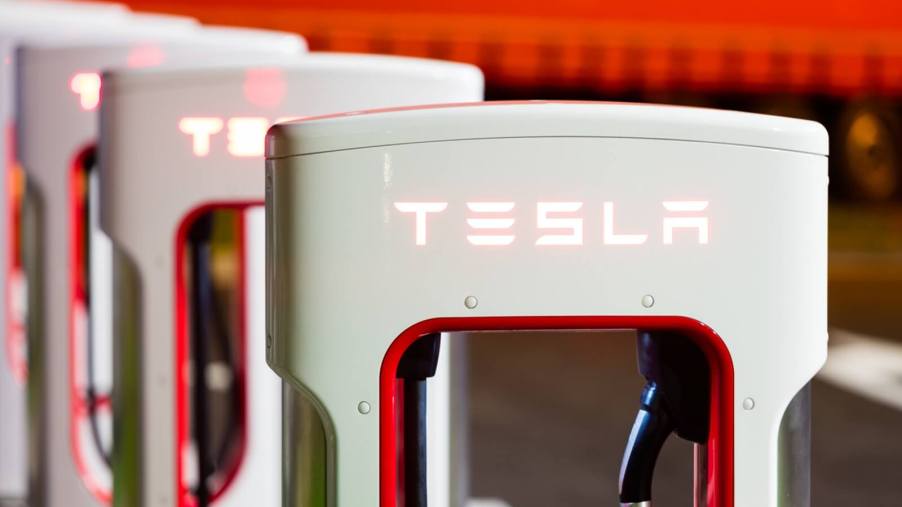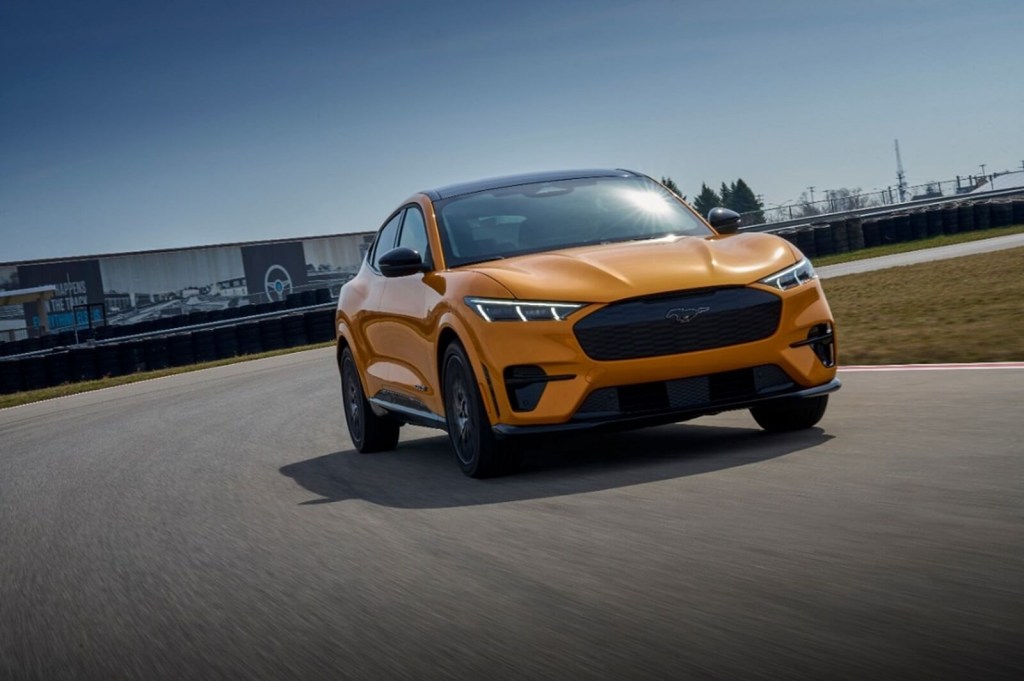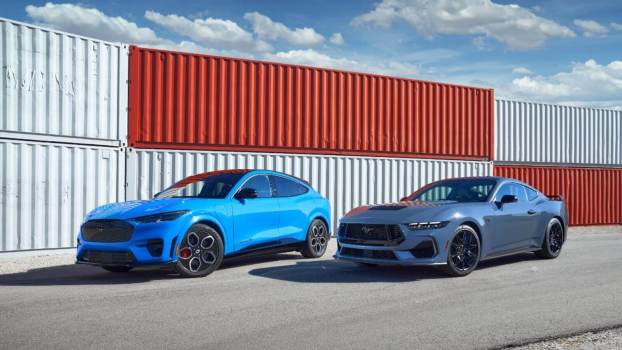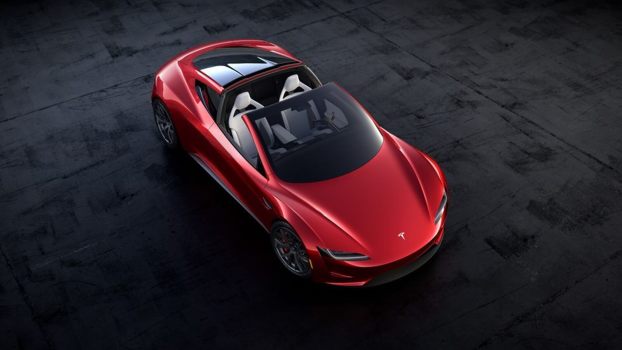
Ford Mustang Mach-E Drivers Might Anger Tesla Owners at Superchargers
Tesla is opening up many of its superchargers to NACS-committed electric vehicles (EV). While that’s good news, the design of some NACS EVs and the existing V3 supercharger architecture might not play nice. In fact, a recent social media post suggests that the Ford Mustang Mach-E could present an issue at a Tesla supercharger due to its port location.
Amid Tesla superchargers opening up to non-Tesla EVs, the Ford Mustang Mach-E might have a problem
Tesla announced it would open up over 15,000 of its superchargers to other brands’ EVs. It’s good news for drivers with North American Charging Standard (NACS) EVs. However, in a recent social media post, tech show presenter Marques Brownlee pointed out that the Ford Mustang Mach-E in Tesla’s announcement video blocked an extra spot.
Commenters were quick to point out that the Mach-E wouldn’t have the same issue with V4 charging architecture, and would instead take up one spot. Tesla’s updated V4 superchargers can charge at a rate of 350 kW, about 100 more than the V3 chargers, per not a tesla app. However, the V3 architecture involves charging equipment between stalls.
As such, electric vehicles like the Ford Mustang Mach-E have the potential to block a second stall due to the EV’s charge port location. What’s more, Brownlee’s social media post suggests that the charger app will show the blocked spot as available. Of course, an unlucky EV driver could pull up to discover that a Mach-E is hindering their access to a Tesla supercharger.

It’s not all bad though; the V4 superchargers will relocate the charging equipment to a front-and-center location in stalls. As a result, drivers with tricky charging port locations could have an easier time accessing dispensers without blocking open spots. That, and a V4 running at over 255 kW could save EV owners time at the stalls. Of course, a longer cable would go a long way.





